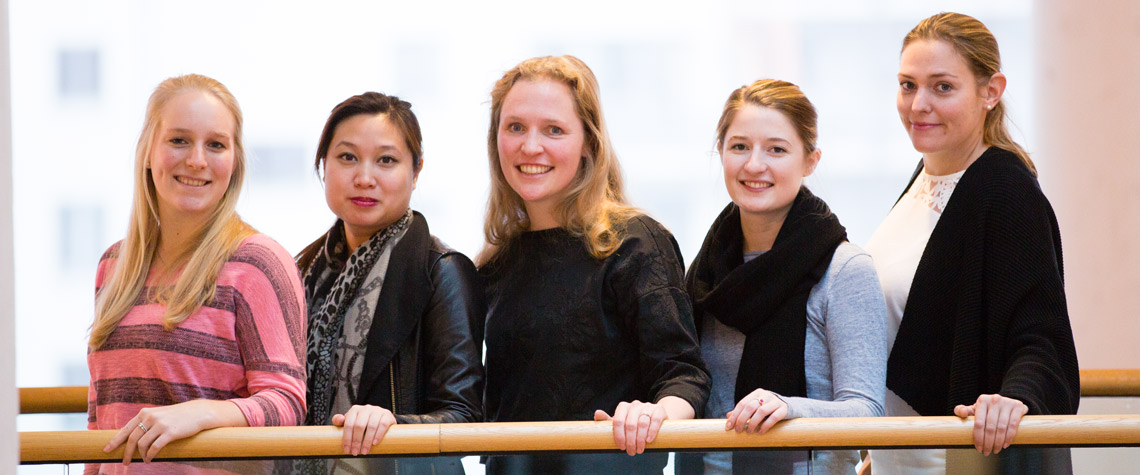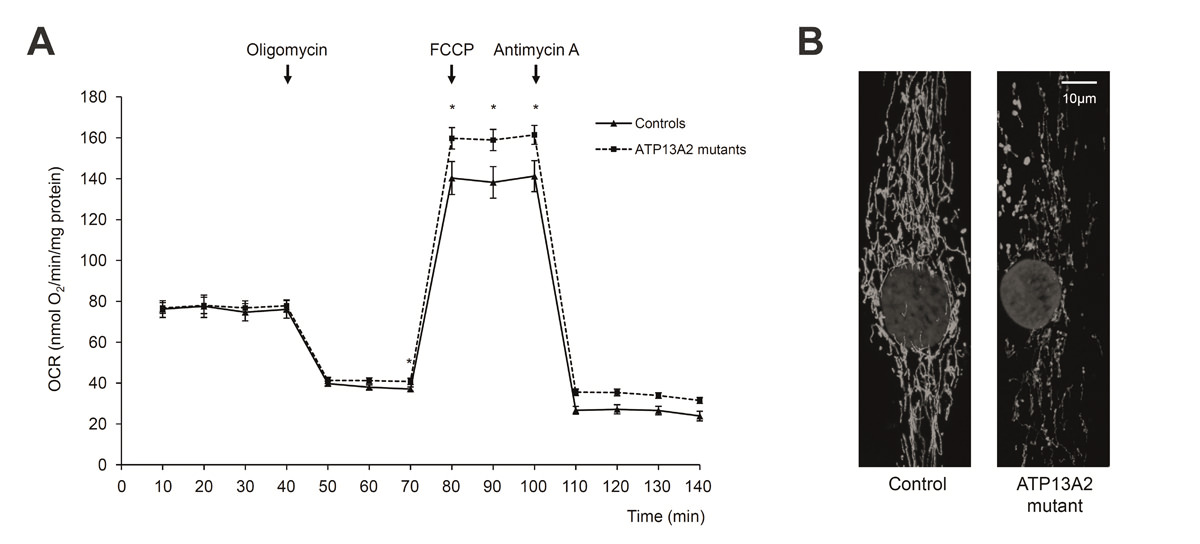Mitochondrial function in movement disorders

Team: Sophie Imhoff (MD student); Joanne Trinh (postdoctoral fellow); Beryll Klingler (research technologist); Franca Vulinović (postdoctoral fellow and MD student); Karen Grütz (postdoctoral fellow)
Associated: Philip Seibler, PhD and Aleksandar Rakovic, PhD
The research team “Mitochondrial function in movement disorders” focuses on the molecular and neurobiological underpinnings of movement disorders.
The team is studying the effect of endogenous Parkinson disease (PD) gene mutations on mitochondrial function, morphology and genome integrity in human cellular models. In fibroblasts from PD patients with mutations in the recessive genes PINK1 and Parkin, we identified different mitochondrial phenotypes demonstrating the significance of this organelle for the development of the disorder. Together with Dr. Alexander Rakovic, we characterized the link between the PINK1/Parkin pathway and mitophagy. Most recently, we showed that also the protein ATP13A2, which is mutated in Kufor Rakeb syndrome (a rare form of parkinsonism with dementia), impacts on mitochondrial function and morphology by influencing mitochondrial clearance.
Furthermore, we are investigating the molecular mechanisms underlying myoclonus-dystonia (M-D). Mutations in the SGCE gene cause M-D and the reduced penetrance in M-D can partly be explained by a maternal imprinting of the gene. Using fibroblasts from M-D patients, we generated iPS cells and differentiated those into neurons. In these cells, we are currently studying the DNA methylation pattern as well as the cellular localization and function of the M-D associated protein SGCE.
In the future, we will expand our studies on mitochondrial function in PD to iPS cell-derived neurons. In addition, the role of mitochondrial DNA mutations in PD will become a new focus of our research. This work will be performed in collaboration with the Mitochondrial Research Group at the University of Newcastle upon Tyne.
The “Mitochondrial function in movement disorders” team receives funding from the German Research Foundation (DFG), the Fritz Thyssen Foundation, the Dystonia Medical Research Foundation (DMRF) and intramural grants from the University of Lübeck.
We collaborate with several international researchers including Prof. Carolyn Sue (University of Sydney, Sydney, Australia), Prof. Anthony Schapira (University College London, London, UK), and Prof. Doug Turnbull (Newcastle University, Newcastle, UK).


- Translational Neurogenetics
- Genetics of Rare Diseases
- Functional Genetics of Movement Disorders
- Integrative Omics in Parkinson Disease
- Neuropsychiatric Epidemiology
- Clinical Neurogenetics and Neuroimaging
- Mitochondrial function in movement disorders
- Institut für Systemische Motorikforschung
- Applied Stem Cell Biology